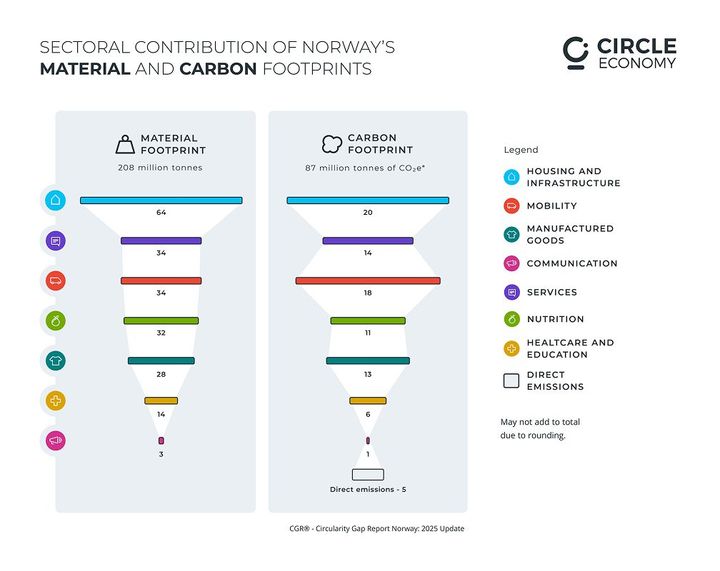
Norway


Our global economy is already consuming more than the planet can sustain—at current levels, humanity uses resources equivalent to 1.75 Earths.1 So, where does Norway fit into this picture? According to the global Circularity Gap Report 2020,2 Norway exemplifies the Shift country profile, alongside most other high-income nations in the Global North. These countries achieve exceptionally high scores on the United Nations Human Development Index (HDI), reflecting strong health, education, and living standards. However, the overconsumption linked to their affluent lifestyles places immense pressure on the planet’s systems. Despite housing just one-fifth of the global population, Shift countries drive two-thirds of global gross domestic product (GDP), making their consumption habits a critical focal point for improving global circularity. With this in mind, Norway has the second-highest GDP per capita in Europe.3 The country’s Ecological Footprint—a measure of human demand on nature’s resources—reveals consumption levels that far exceed what the planet can regenerate. In other words, if everyone lived like the average Norwegian, humanity would need the resources of over 3.6 Earths.4
Key Insights
Explore more about Norway’s material and carbon footprint in fulfilling its society’s needs.

Figure one Sectoral contribution of Norway's material and carbon footprints
Recommendations
The Circularity Gap Report is an initiative of Circle Economy, an impact organisation dedicated to accelerating the transition to the circular economy.
© 2008 - Present | RSIN 850278983